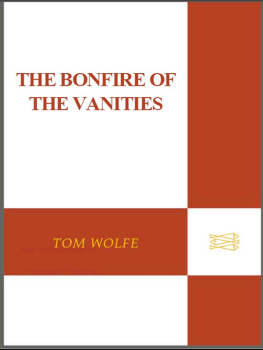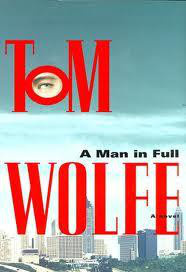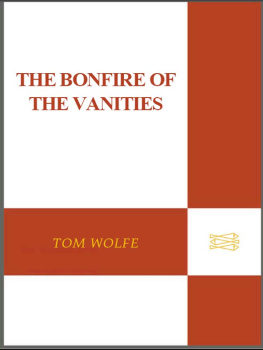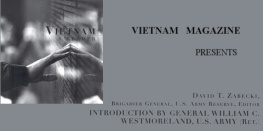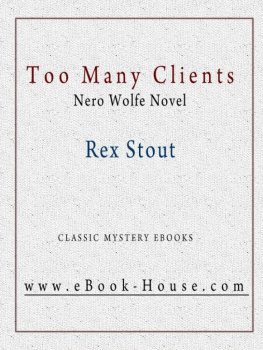L ook! She beckons! With those deep high-class black eyes! Here at a dinner party in Alfred Barrs apartment, in a room full of men who get their shirts hand-laundered at 90 cents a shirt by Forziati on East 74th Street and women who start getting ready for dinner with, first off, a little hair action at 4 p.m. by Kenneth on East 54th Streethere in this room she beckons. Liza, Liza Parkinson, Mrs. Bliss Parkinson, president of the Museum of Modern Art, daughter of Cornelius Bliss, niece of Lillie P. Bliss, who was one of the founders of the museum, sister of Anthony Bliss, the president of the Metropolitan Opera AssociationLiza, the very embodiment of all that is most social, high class, Protestant tree-of-life and embossed-watermark-writing-paper in this whole art world social thingLiza beckons to Spike. And Spike catches Bobs eye across the room. And Bob gives Spike the high sign. Go, girl, go. This is the momentbeckoning black eyes!
Bob and Spike Spike when Bob, Robert Scull, Americas most famous collector of pop and other avant-garde art, first met his wife, Ethel, Ethel Redner of West 86th Street, on a blind date back in 1943, he said to himself, Ethel, what a terrible name. So he called her Spike. Spikes family had some dough, but Bob and Spike were so broke that they were living in one room on West 56th Street with a Murphy bed. They got a $12 membership in the Museum of Modern Art, three blocks away, on West 53rd Street, and used the museum, the garden, the restaurant and everything, as their living room, to entertain guests in. Is that irony or isnt it? Bob got very interested inthe art there and started a phantom art collection, writing down the names of pictures he wished he had, on a piece of shirt cardboard in his wallet. In 1947 or 1948 Bob started in the New York taxicab business, which was a very rough business at that time, full ofwell, dont ask. Half the guys were rejects from the Mafia shape-up for hotel house dicks. But Bob started making money, and the rest is history. He started actually buying pictures himself. He had to put up with a lot of ridicule and everything, like the time in 1959 when he bought Jasper Johnss beer cans, two cans of Ballantine Ale, as a matter of fact, but everybody called them the beer cans, and the magazines and newspapers came around to take pictures, and he was very proud about buying Japs beer cans. Would you believe they were only making fun of him? Yeah! Kids used to come to his kids in school and say, Hey, is your old man the nut who bought the beer cans? But he kept on collecting, and pretty soon Robert Scull became synonymous with pop art, and Bob and Spike are just getting in tight with the very social Museum of Modern Art crowd and finally here is the big dinner in Alfreds apartmentAlfred Barr is the curator of the Museum of Modern Art
Here amid the crystal and the silver asparagus holders and the Forziati ironing jobs are people the magnitude of Liza and Philipthats Philip Johnson, the architect, socialite and art savantand Bob and Spike are looking great. Bob, who is 49, is just emerging, sartorially, from the 57th Street Biggie phase. The 57th Street Biggie look is the look of the men in New York who are in their 40s or 50s and the money is starting to come in and their hair is thinning in the crown but they comb it straight back like the real studs of the American business world do, like Lyndon Johnson does, as a matter of fact. They are getting an opulent plumpness about them, not fat exactly, and they dont have double chins, just sort of a great smooth tan fullness in the jowls set off by some good Sulka shirt work and a little Countess Mara in the necktie and a suit from Frank Brothers and a wife with apricot-colored hairthey all have wives with apricot-colored hair for some reasonand they take the Christmas cruise on the S.S. France . Only Spike didnt go the apricot-hair route. She has already graduated to the big time in fashion. She is slender and quite pretty. Her hair, which is mostly kind of pineapple blond, is great, and Kenneth does it. Her dresses come from St. Laurent, Dior, Chanel, Courrges, Mainbocher, Cardin, Ken Scott, you name it. And she didnt like the Christmas cruise on the S.S. France . All the women came to the breakfast table wearing furs and enough diamonds to sink the boat. Spike took to her stateroom and wouldnt come out.
Finallythe moment arrives. Bob and Spike are both eating withthe Continental style they now use, holding the fork in the left hand and the knife in the right. Liza Parkinson beckons, motions to Spike to come aside so she can talk to her. Those deep dark aristocratic eyesshe is the whole thing in the whole social thing of the art worldand Bob gives Spike the high sign, and right away, without having to say a word to each other, Bob and Spike both figure the same thing. This is the moment. Liza is going to say to Spike something like, Could you serve on this board or whatever, or could we get yours and Bobs advice on this or that vital project, or, at the very least, would you come to such-and-such a dinneryou know, something that will symbolize the fact that Robert and Ethel Scull are now in the inner circle of the whole thingand Liza draws Ethel aside and then Lizaregal eyes!pops the question
Afterwards, when Spike comes back, Bob can hardly wait.
What did she say?
Are you all set? says Spike.
Yeah
You sure your hearts O.K.?
Yeah
She said, Ethel, would you mind telling me who does your hair?
Who does your hair?
Wellwhat did you say to that?
I told her.
Then what did she say?
She said would I ask him if he could do hers.
Thats all she said?
No. She wanted to know how much it was.
Well, there it is. It is just an incident, but it gives an idea of what Bob and Spike are up against in this whole art world thing. Bob does everything right, better than right, in fact. He rises out of the Lower East Side and its psychological affiliates, the Bronx and Long Island, to an eight-room apartment on Fifth Avenue overlooking the park and a summer place in East Hampton. He amasses a collection of pop art and op art and primary art, in fact, everything since abstract expressionism, that is actually better than the Museum of Modern Arts in that area. Like a lot of ambitious guys who had to take the night-school route, he studies his field very thoroughly, talks to the artists themselves for hours on end, until he probably knows more about pop art and post-pop art than anybody in the country except for Leo Castelli, Ivan Karp, Henry Geldzahler and a couple of others. He probably knows a lot more about it than Alfred Barr. Yet what do they want from Bob and Ethel Scull at the Museum of Modern Art? They want $1,000 a year so they can be on the InternationalCouncil and they want Ethel to help organize a partyand where does she get her hair done?
Who needs that? This season Robert and Ethel Scull are transferring their backing from the Museum of Modern Art to the Whitney. All right, the whole art world is not going to flip over backward like Charlie Brown in the comic strip over this, but its a sign of this whole social thing in the art world that nobody knows anything about. They can talk about modern art and contemporary art all they want. But its the same old social thing thats been going on in art for a hundred years, the flutey bitones of the Protestant cultural establishment, and





